Asia is home to some of the most vibrant and unique festivals in the world. With its rich tapestry of cultures and traditions, the continent offers a diverse array of celebrations that captivate and intrigue. From colorful parades and ancient rituals to lively music and quirky traditions, these festivals provide a fascinating glimpse into the heart and soul of Asian communities. In this article, we explore the top 9 most unique festivals in Asia, each offering its own distinct experience and a chance to immerse yourself in the local culture.
Hokkai Heso Matsuri (Belly Button Festival) — Hokkaido, Japan
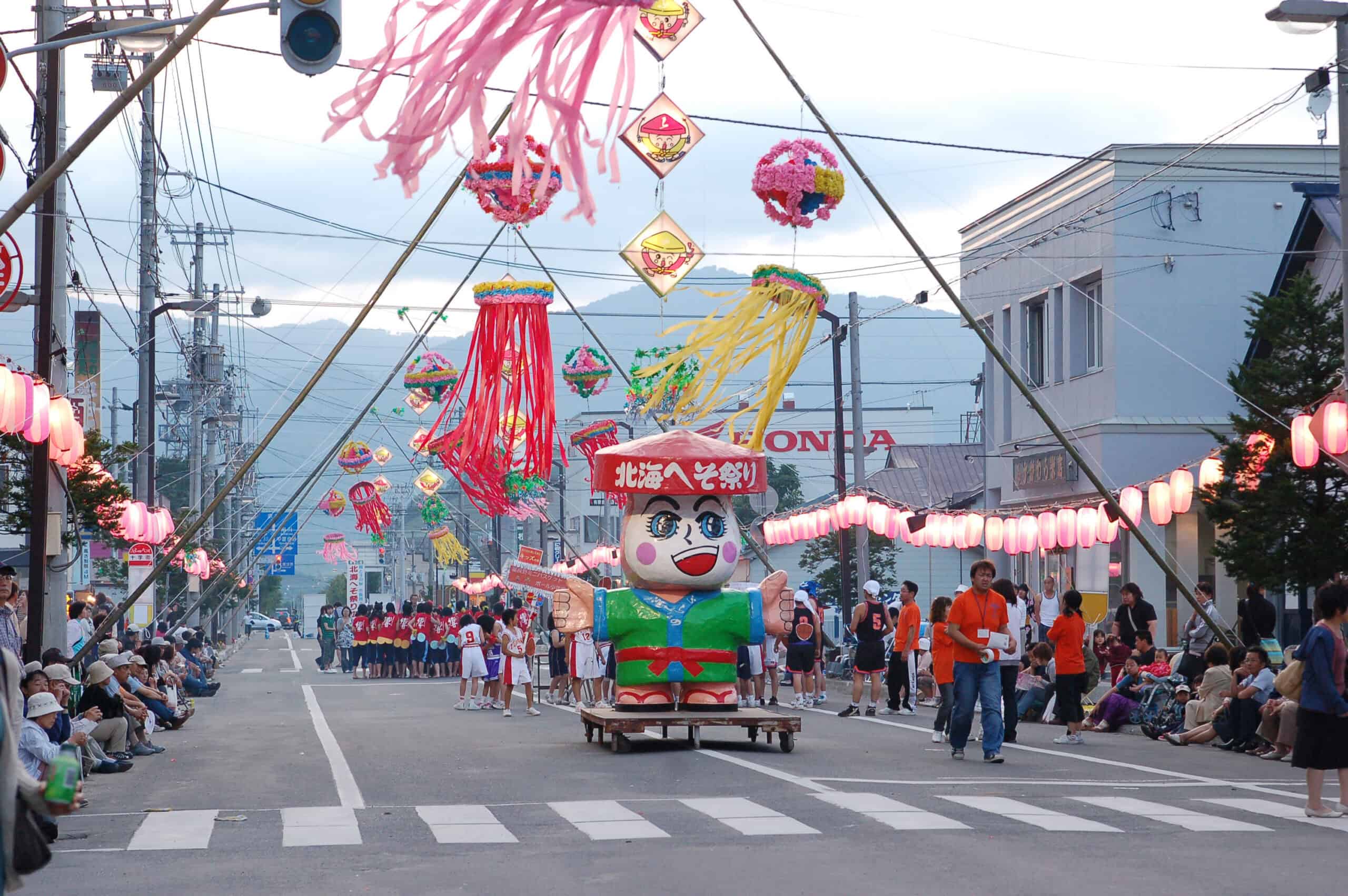
The Hokkai Heso Matsuri, or Belly Button Festival, held in Furano, Hokkaido, is a quirky celebration that highlights the town’s central location in Hokkaido. Originating over four decades ago to foster community spirit, the festival’s unique twist involves participants painting faces on their bellies and performing humorous dances. These “belly button” faces, complete with hats and costumes, create a lively and entertaining atmosphere. Held annually on July 28-29, the event features parades, performances, and competitions, making it a must-see for those seeking a whimsical and memorable cultural experience.
Boryeong Mud Festival — Boryeong, South Korea
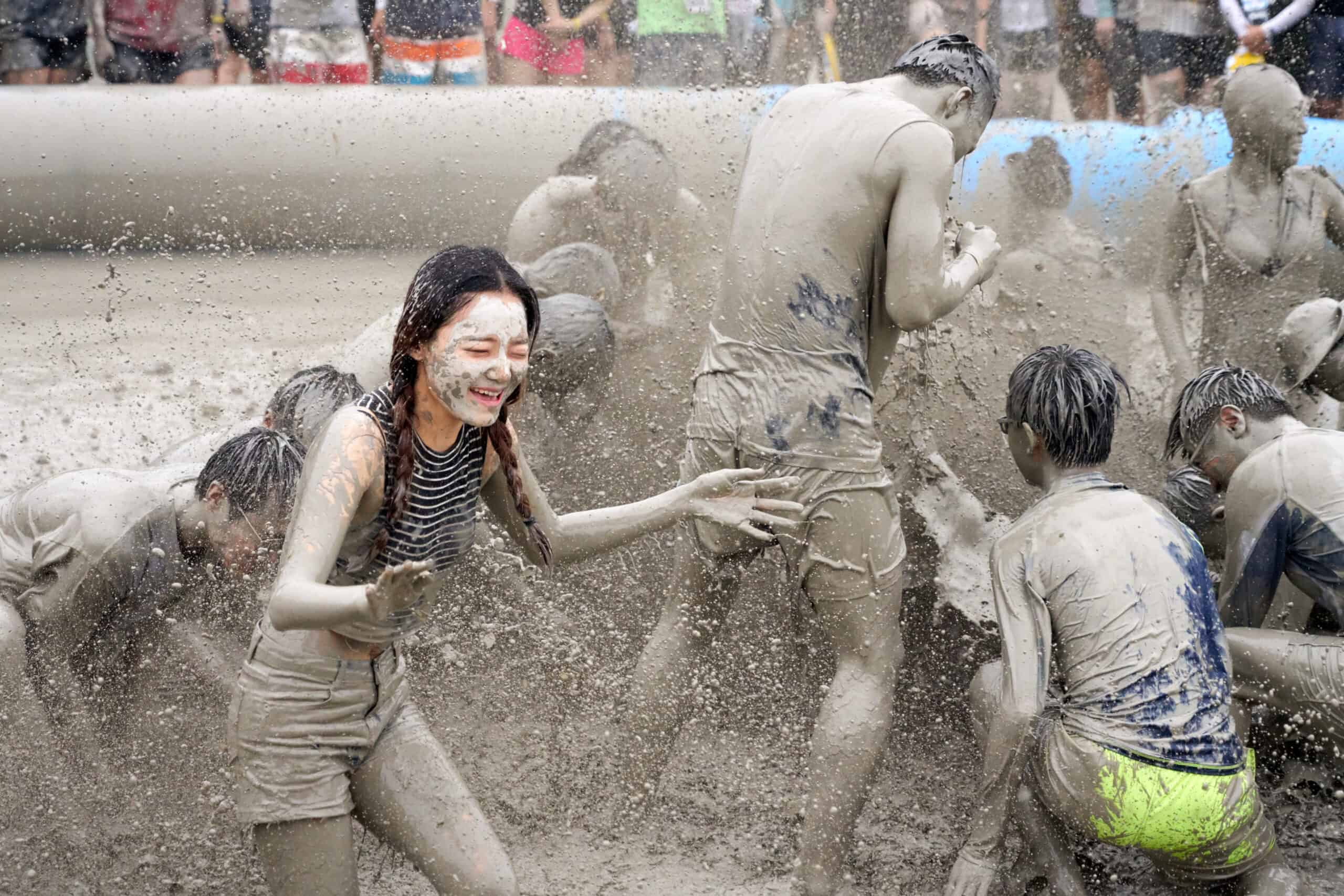
Every summer, the coastal town of Boryeong in South Korea transforms into a muddy playground for the Boryeong Mud Festival. Initially launched in 1998 to promote the local mud’s cosmetic benefits, the festival has grown into a major tourist attraction. Attendees revel in mud wrestling, mud sliding, and even a mud prison, all while enjoying live music and fireworks. The mineral-rich mud, renowned for its skin-enhancing properties, adds a unique twist to the festivities, blending fun with a touch of health and wellness. It’s a messy but exhilarating event that draws visitors from all over the world.
Baosheng Cultural Festival — Taipei, Taiwan
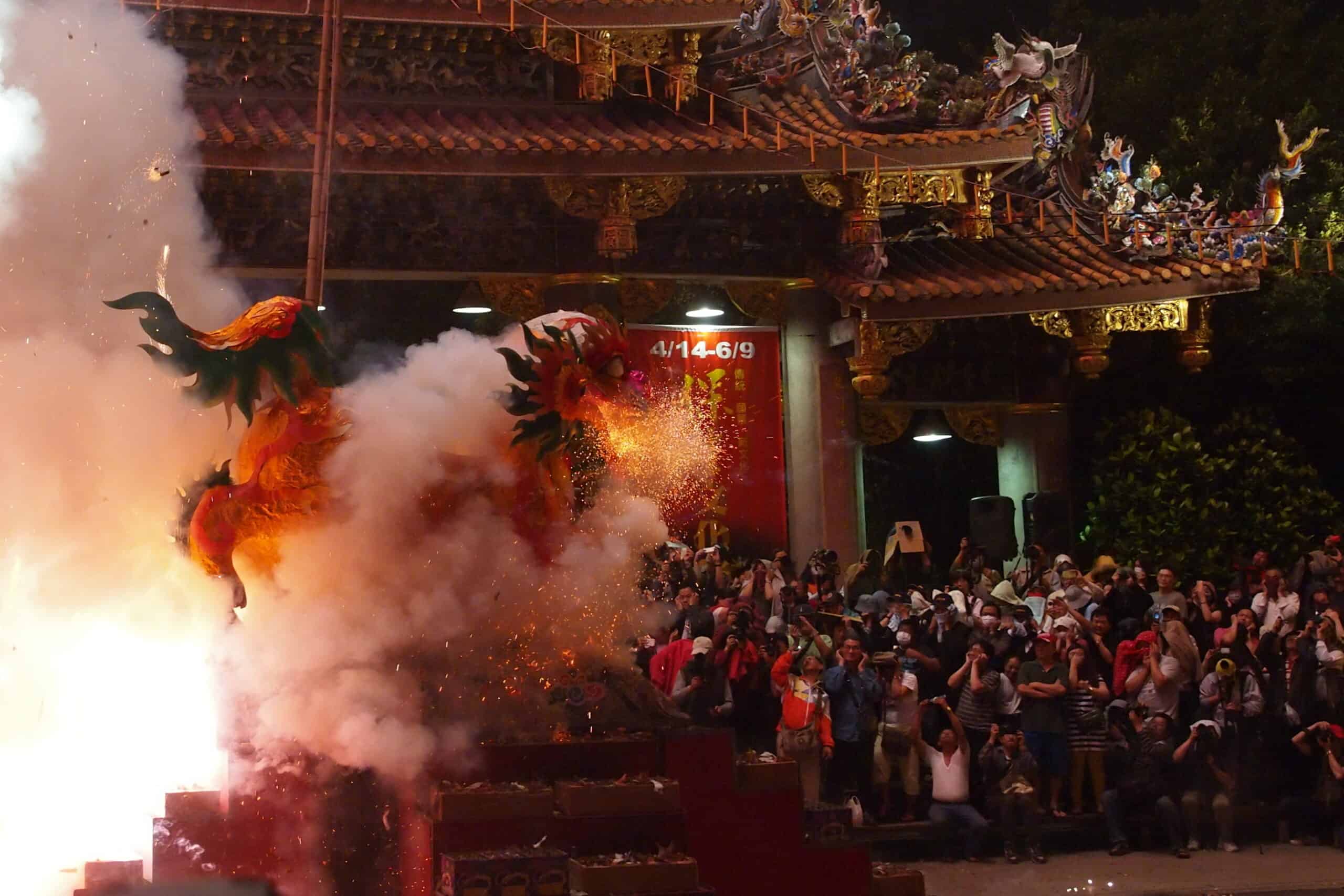
The Baosheng Cultural Festival in Taipei is a vibrant celebration of traditional Chinese medicine and folklore. Held in honor of Baosheng Dadi, the God of Medicine, this festival features a grand parade with colorful deities carried through the streets. The procession is accompanied by traditional music, lion dances, and folk performances. Visitors can also participate in free medical consultations and seminars on traditional Chinese medicine. This blend of cultural heritage and community health services makes the Baosheng Cultural Festival a unique and enriching experience for both locals and tourists.
Naga Fireball Festival — Nong Khai, Thailand
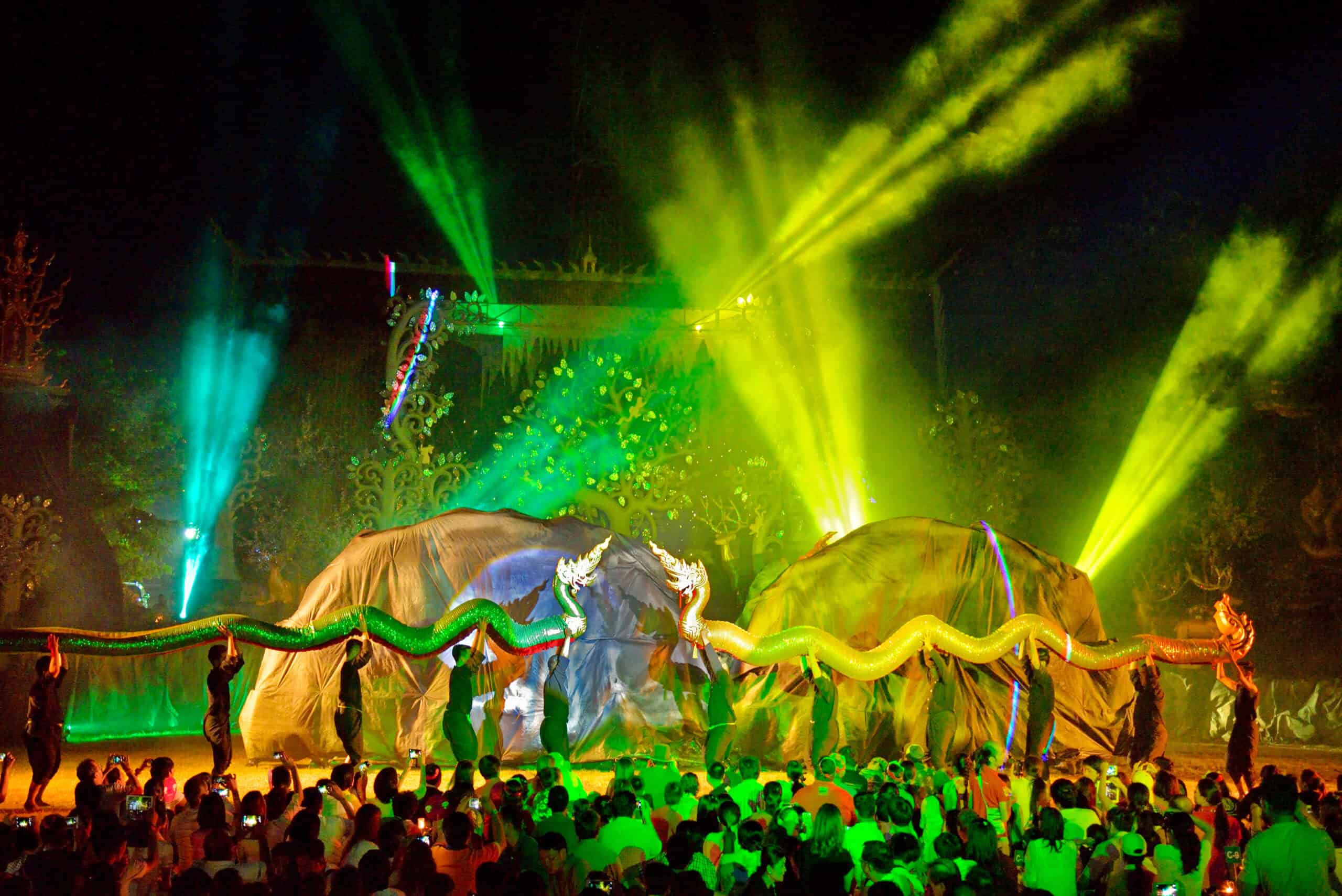
The Naga Fireball Festival in Nong Khai, Thailand, is a mysterious and captivating event held annually at the end of Buddhist Lent. Spectators gather along the Mekong River to witness glowing orbs rise from the water and ascend into the sky. Locals believe these fireballs are created by the mythical Naga serpent. The phenomenon, though unexplained, draws thousands of visitors each year. The festival also includes cultural performances, food stalls, and boat races, adding to the festive atmosphere. This unique event combines natural wonder with cultural lore, making it a fascinating spectacle.
Omed-Omedan — Bali, Indonesia
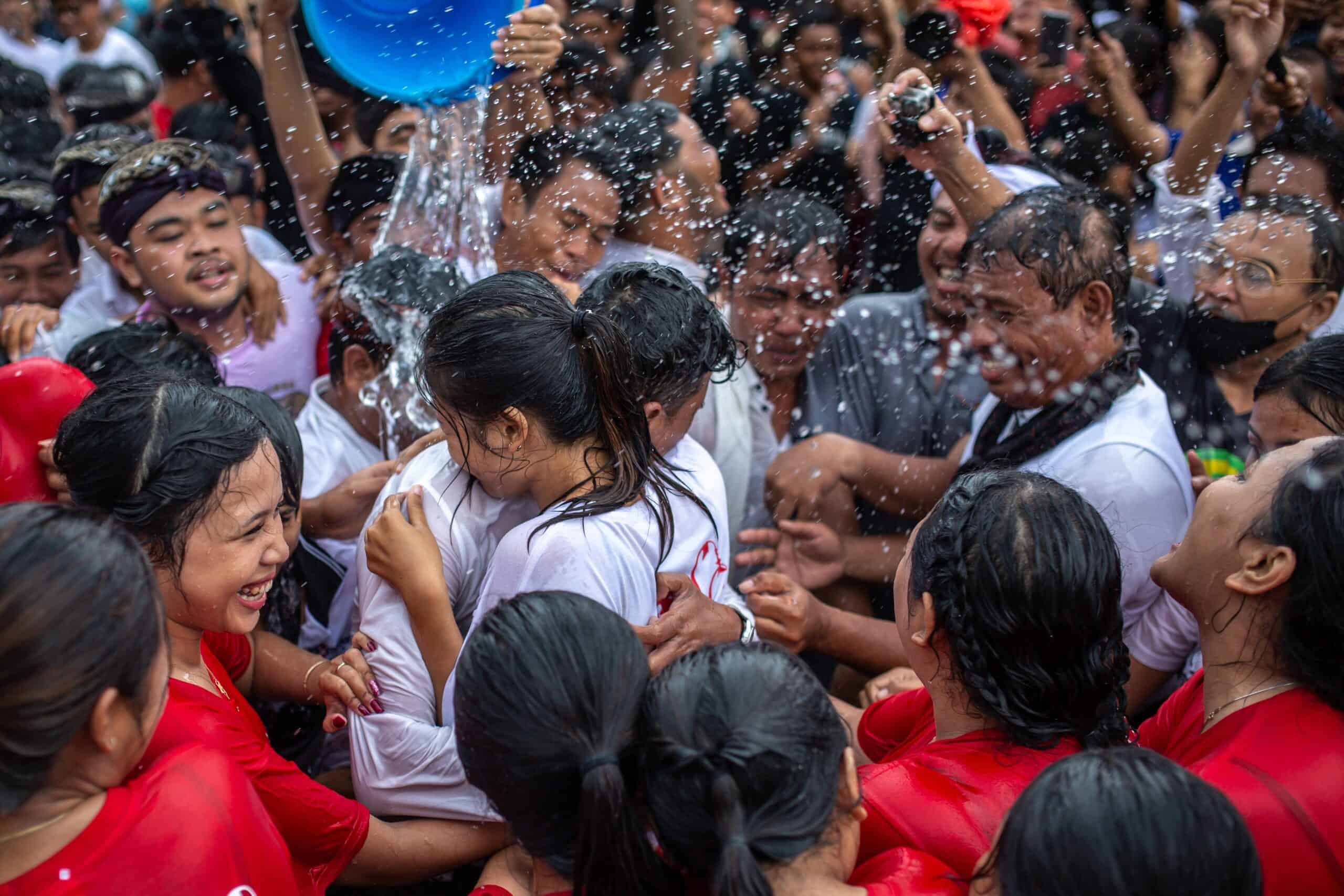
Omed-Omedan, known as the “kissing festival,” is a unique Balinese tradition celebrated in the village of Sesetan. Held the day after Nyepi, the Balinese New Year, the festival involves unmarried young men and women participating in a mass kiss while being doused with water by onlookers. This playful event is believed to bring good fortune and strengthen community bonds. The combination of traditional music, rituals, and the lively crowd creates an energetic and joyous atmosphere. Omed-Omedan offers a rare glimpse into the lighter, more festive side of Balinese culture.
Holi — India
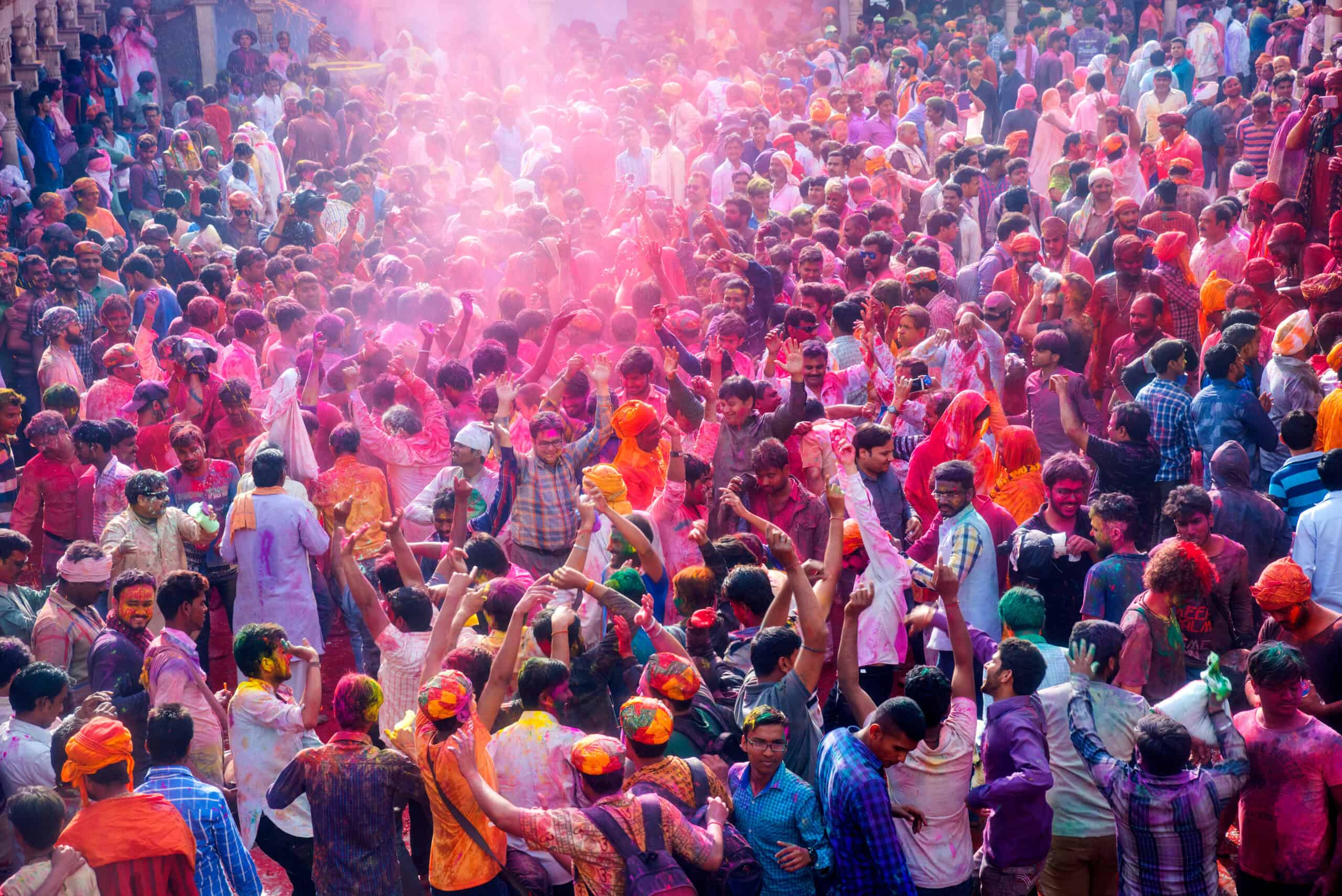
Holi, the Festival of Colors, is one of India’s most iconic celebrations, marking the arrival of spring and the triumph of good over evil. Participants throw vibrant colored powders at each other, dance to traditional music, and enjoy festive foods. The festivities begin with Holika Dahan, a bonfire symbolizing the burning of evil spirits. The following day, people take to the streets for a joyous color fight, smearing each other with hues of red, green, yellow, and more. Holi’s exuberant and inclusive nature makes it a must-experience event, showcasing India’s rich cultural tapestry.
Loi Krathong — Thailand and other Southeast Asian countries
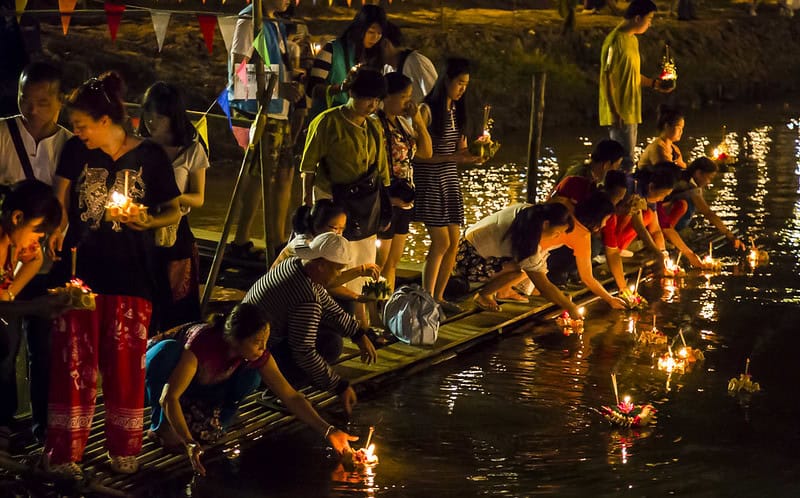
Loi Krathong, celebrated on the full moon of the 12th Thai lunar month, is a beautiful festival of lights. Participants release decorated floats, or krathongs, onto rivers and lakes to pay respects to the water spirits and seek forgiveness for past transgressions. The night sky is illuminated with lanterns, creating a mesmerizing display. This festival is celebrated across Thailand, with notable events in cities like Chiang Mai and Sukhothai. The combination of water, light, and reflection creates a serene and enchanting atmosphere, making Loi Krathong a truly magical experience.
Dragon Boat Festival — China
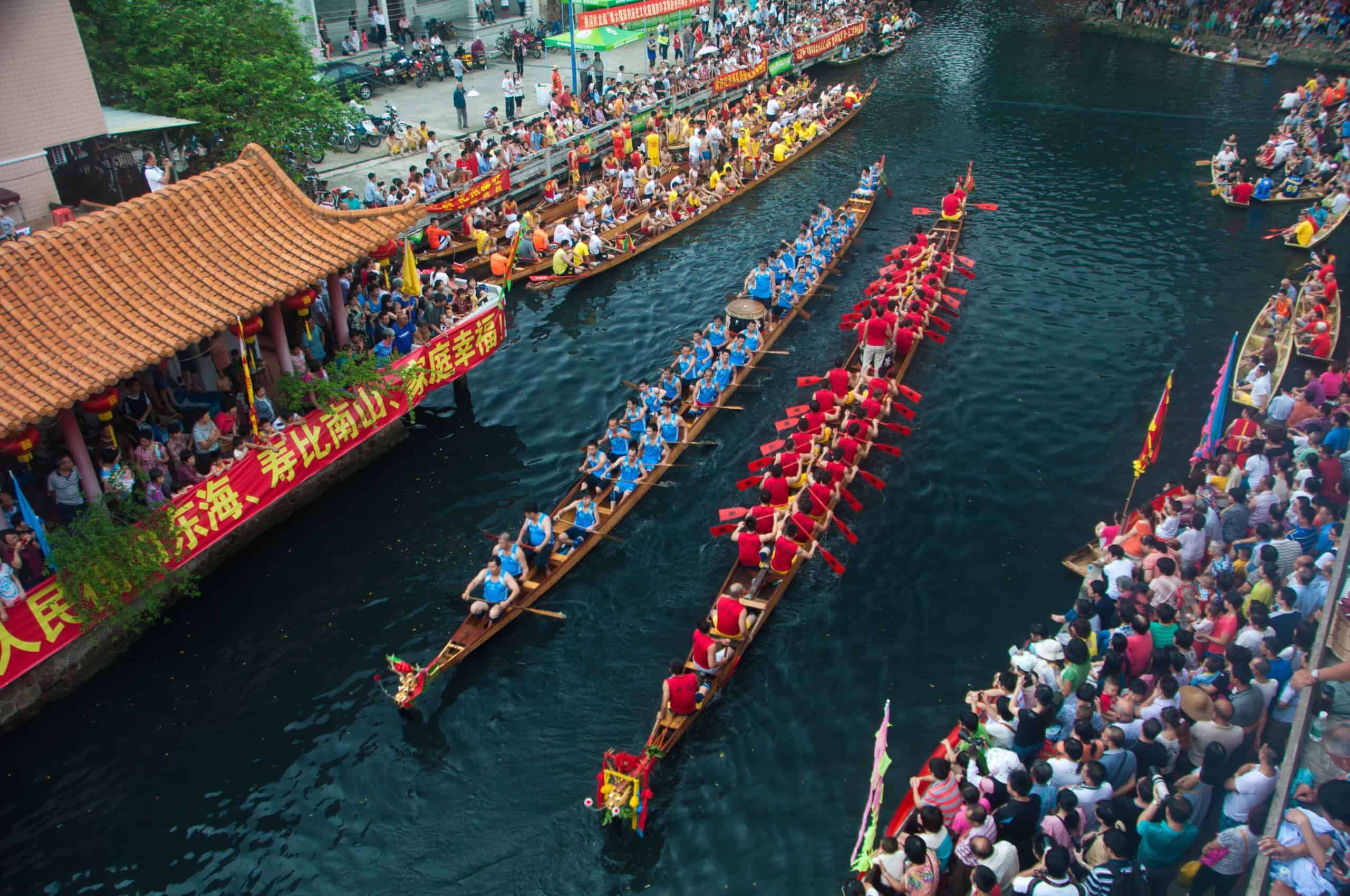
The Dragon Boat Festival, or Duanwu Festival, is an ancient Chinese tradition held on the fifth day of the fifth lunar month. The highlight is the dragon boat races, where teams paddle in unison to the beat of drums, competing in ornately decorated boats. The festival commemorates the poet and statesman Qu Yuan, who drowned himself in protest against corruption. Locals throw rice dumplings, called zongzi, into the water to feed his spirit and ward off evil. The festival is a vibrant blend of sports, culture, and culinary delights, offering a unique insight into Chinese heritage.
Diwali — India
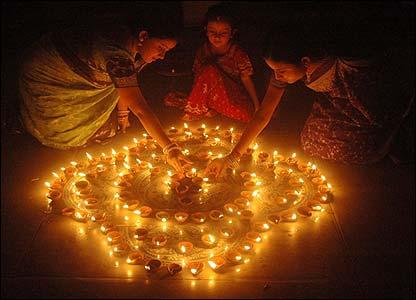
Diwali, the Festival of Lights, is one of India’s most significant celebrations, observed by Hindus, Sikhs, and Jains. It marks the victory of light over darkness and good over evil. Homes are adorned with oil lamps and colorful rangoli designs, and fireworks light up the night sky. Families come together to perform rituals, exchange gifts, and enjoy festive foods. The festival spans five days, with each day holding its own special significance. Diwali’s radiant displays and joyous spirit make it a heartwarming and visually stunning festival, deeply rooted in Indian culture.
This article originally appeared on Rarest.org.
More from Rarest.org
8 Rare Harry Potter Collectibles

Collecting Harry Potter memorabilia is a passion for many fans. The most sought-after items are those that hold unique value and historical significance. Read more.
20 Most Influential Political Leaders of the 20th Century
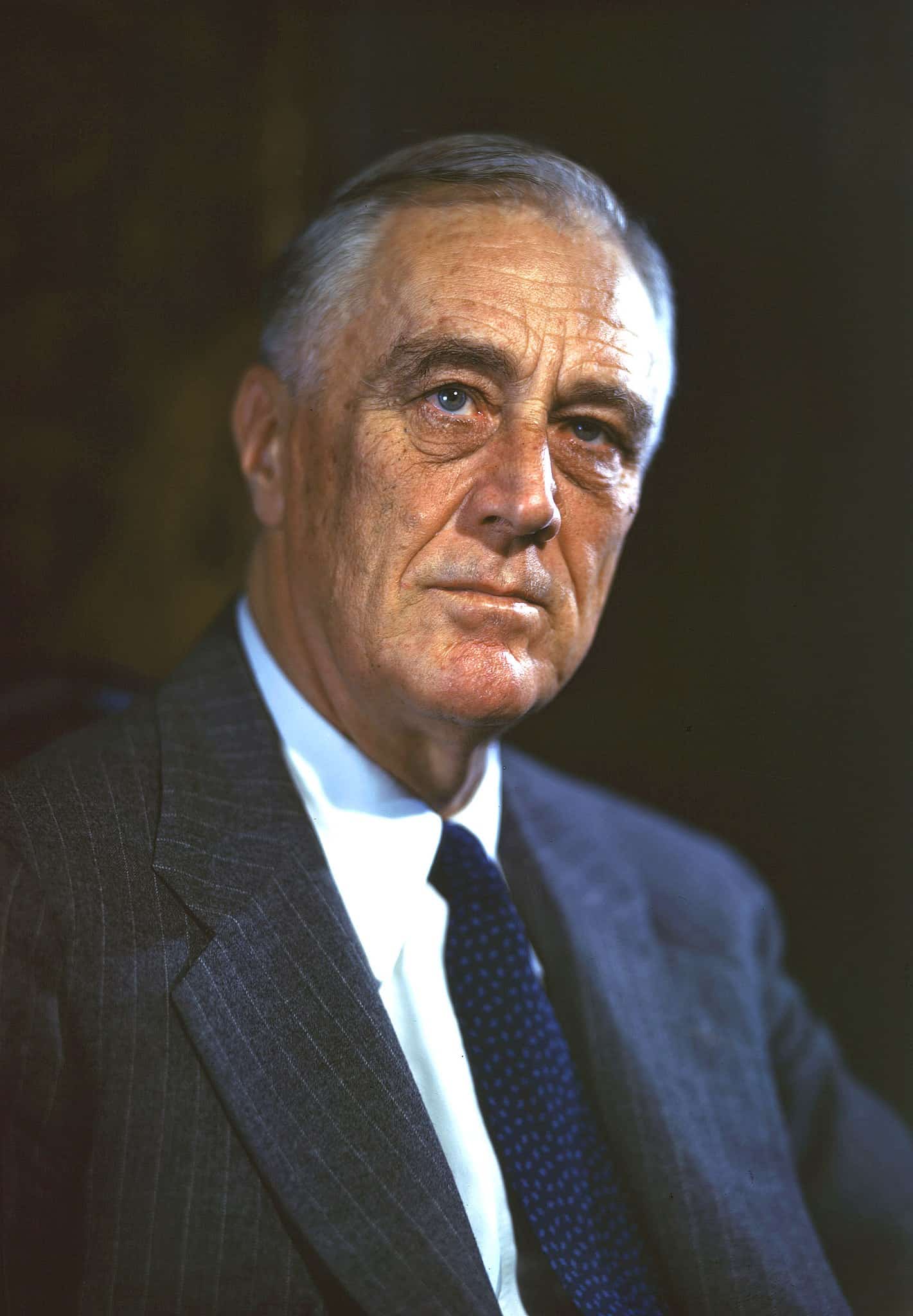
Leon Perskie / Wikimedia Commons
The 20th century saw dramatic changes and upheavals worldwide. During this period, key political leaders emerged, each leaving a lasting impact on their countries and the world. Read more.
The 10 Rarest Military Memorabilia and Their Worth
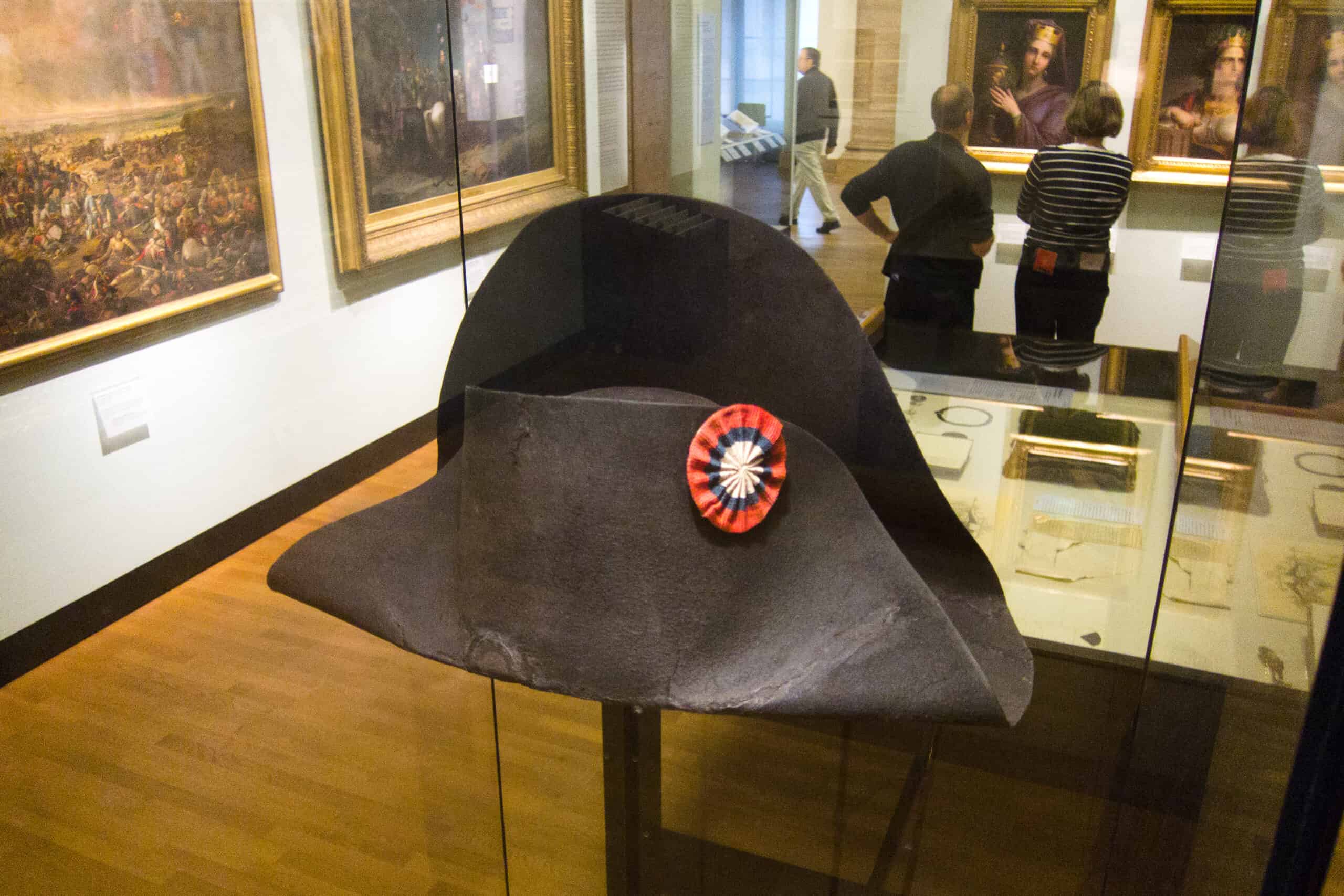
Collecting military memorabilia offers a glimpse into history’s pivotal moments. These rare items not only hold immense historical significance but also command high prices at auctions. Read more.
